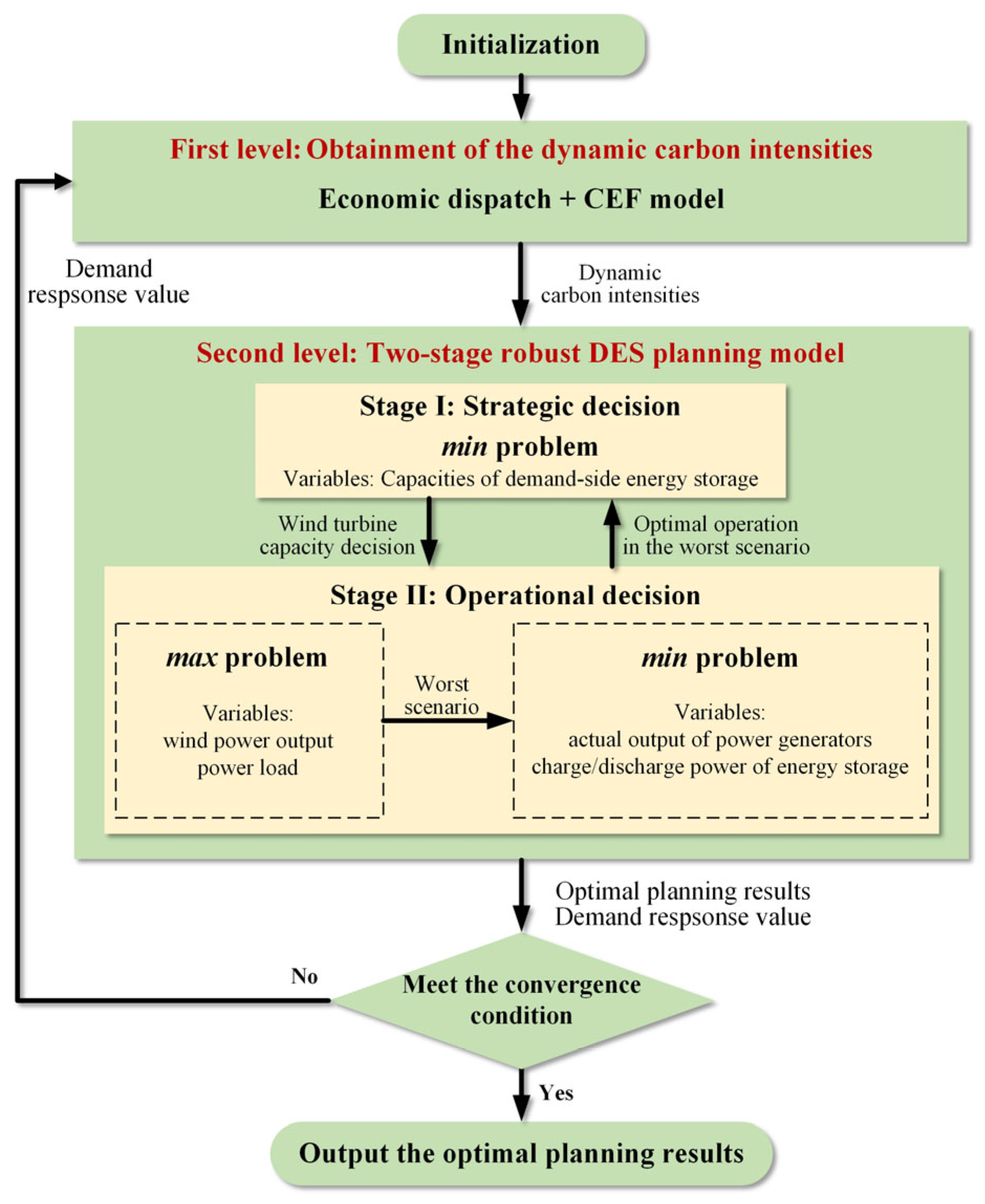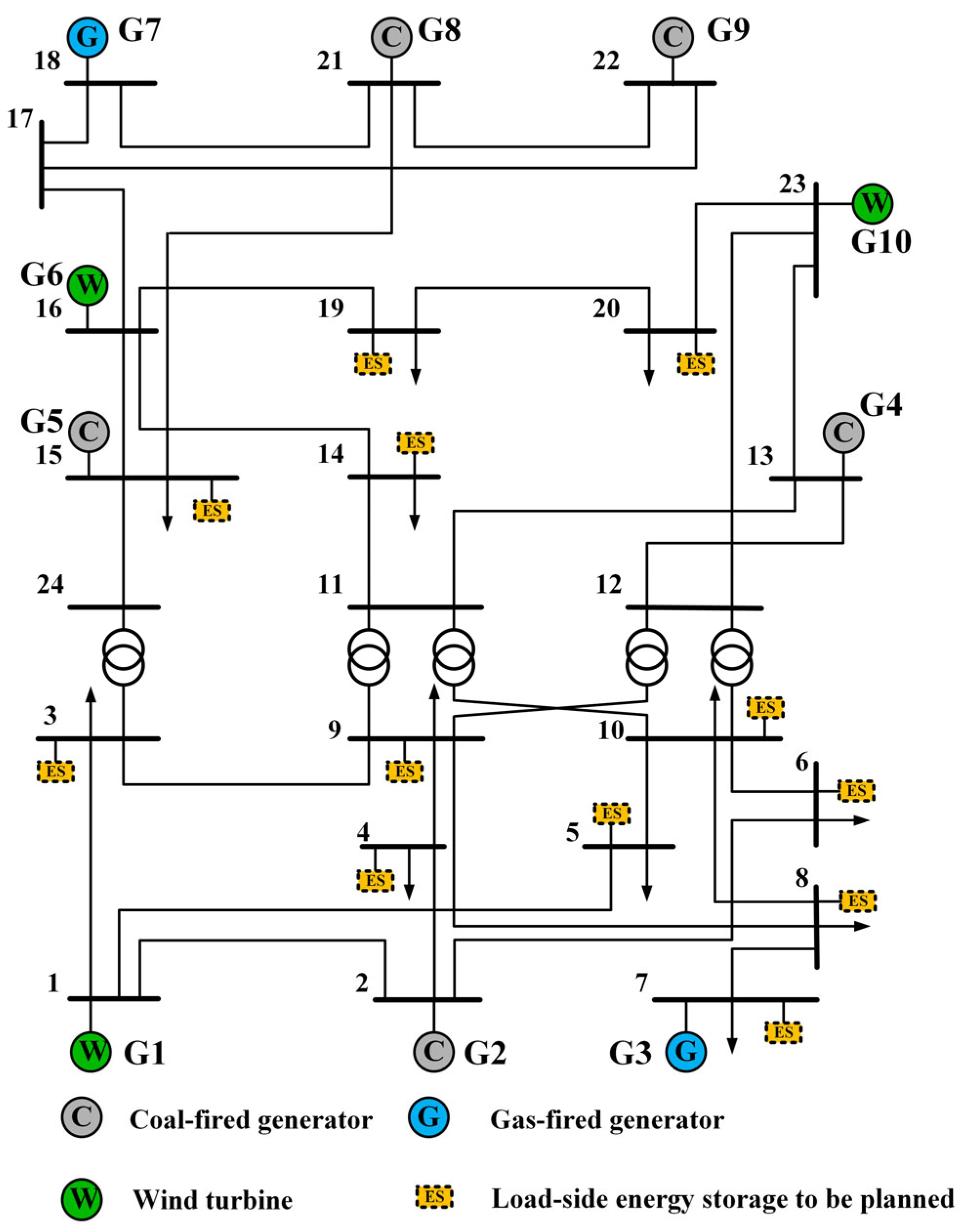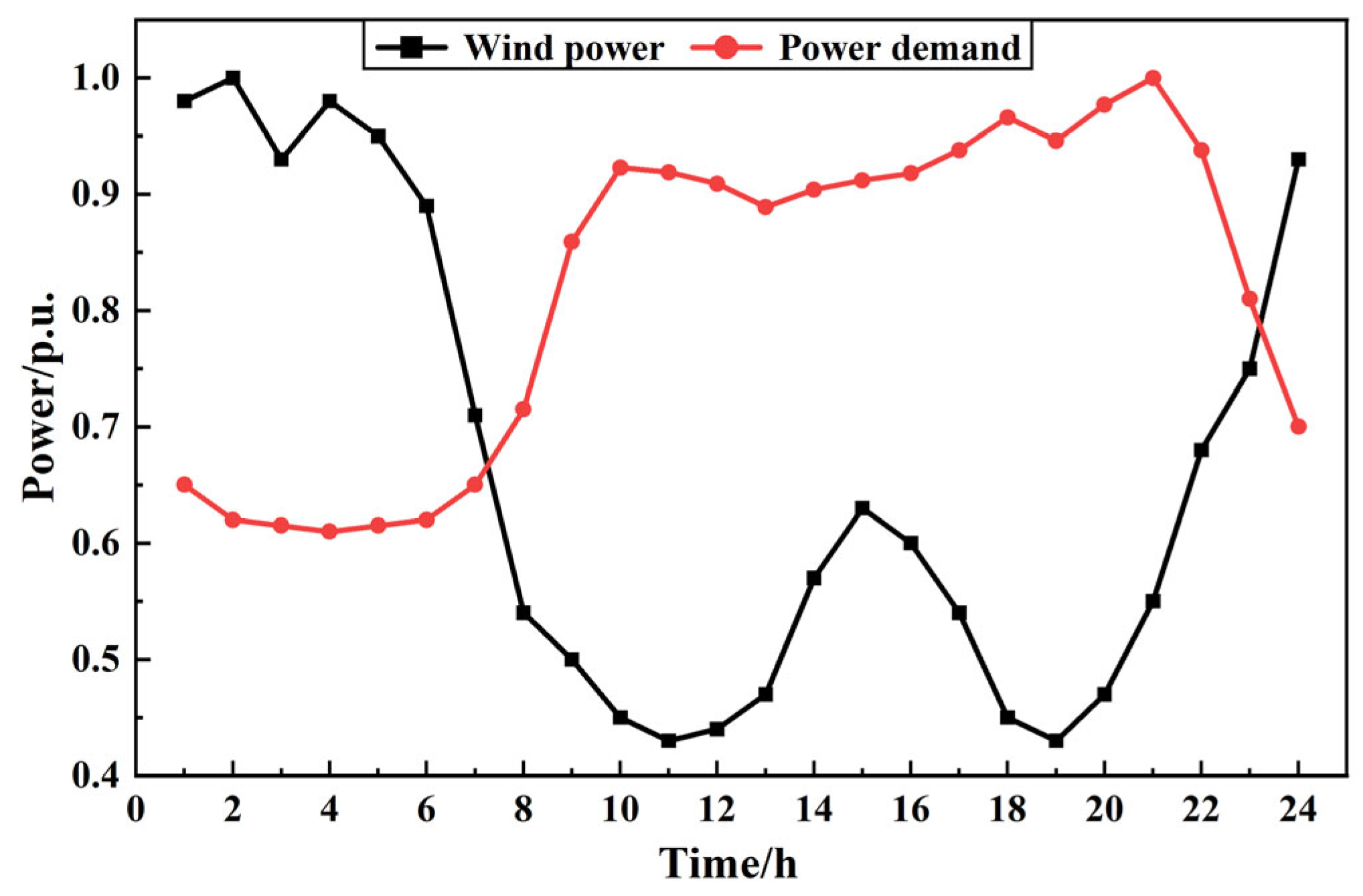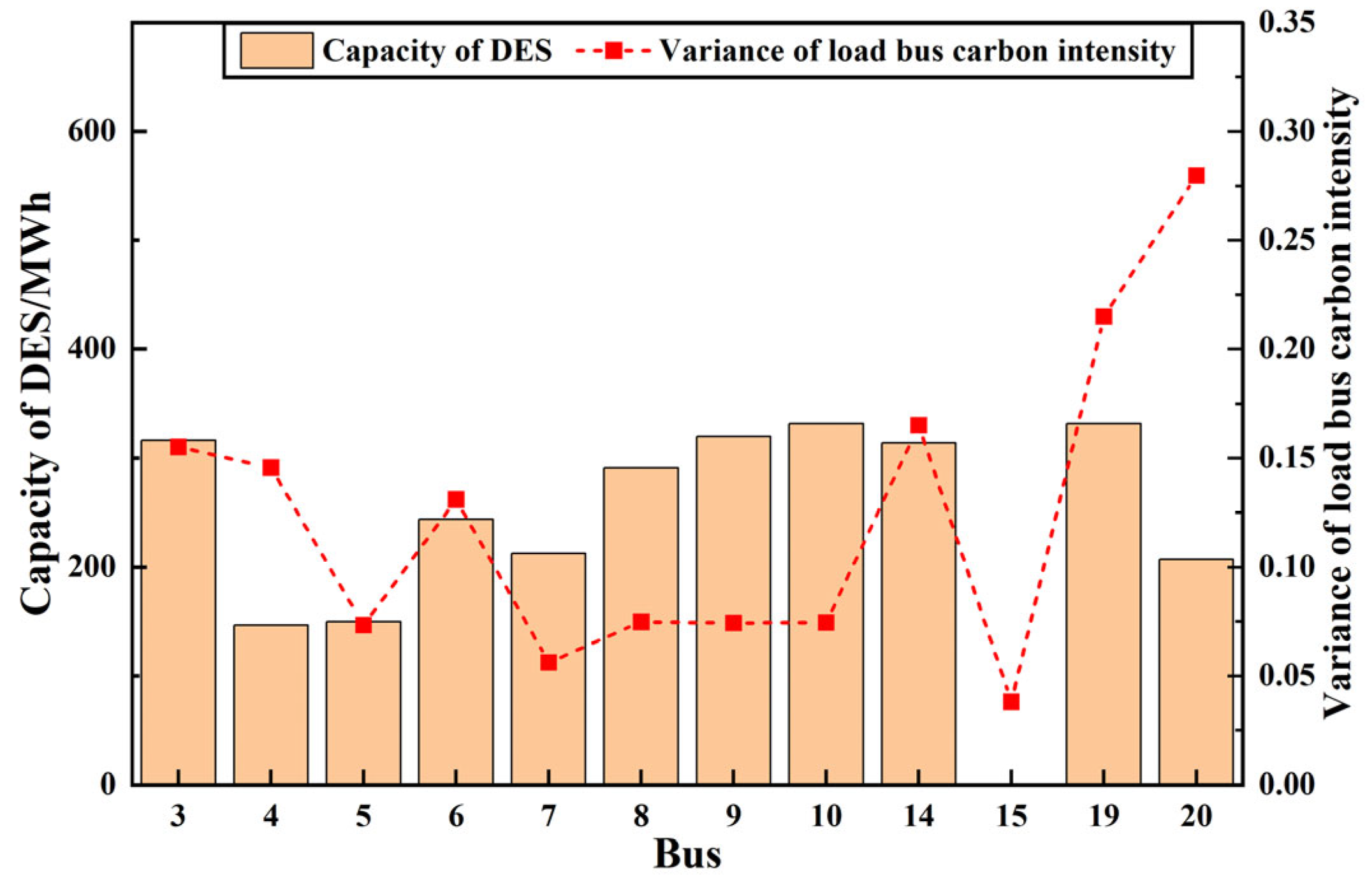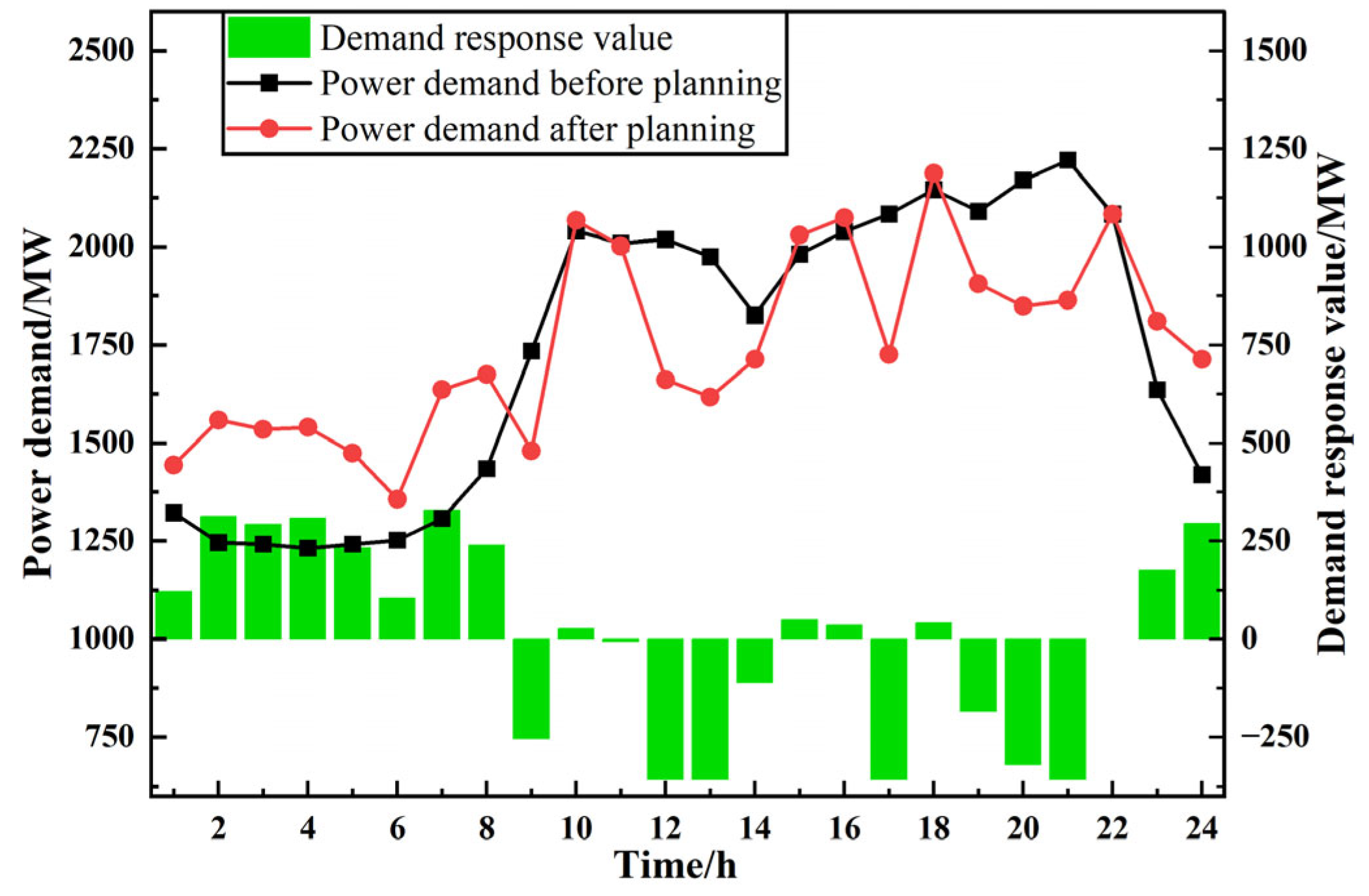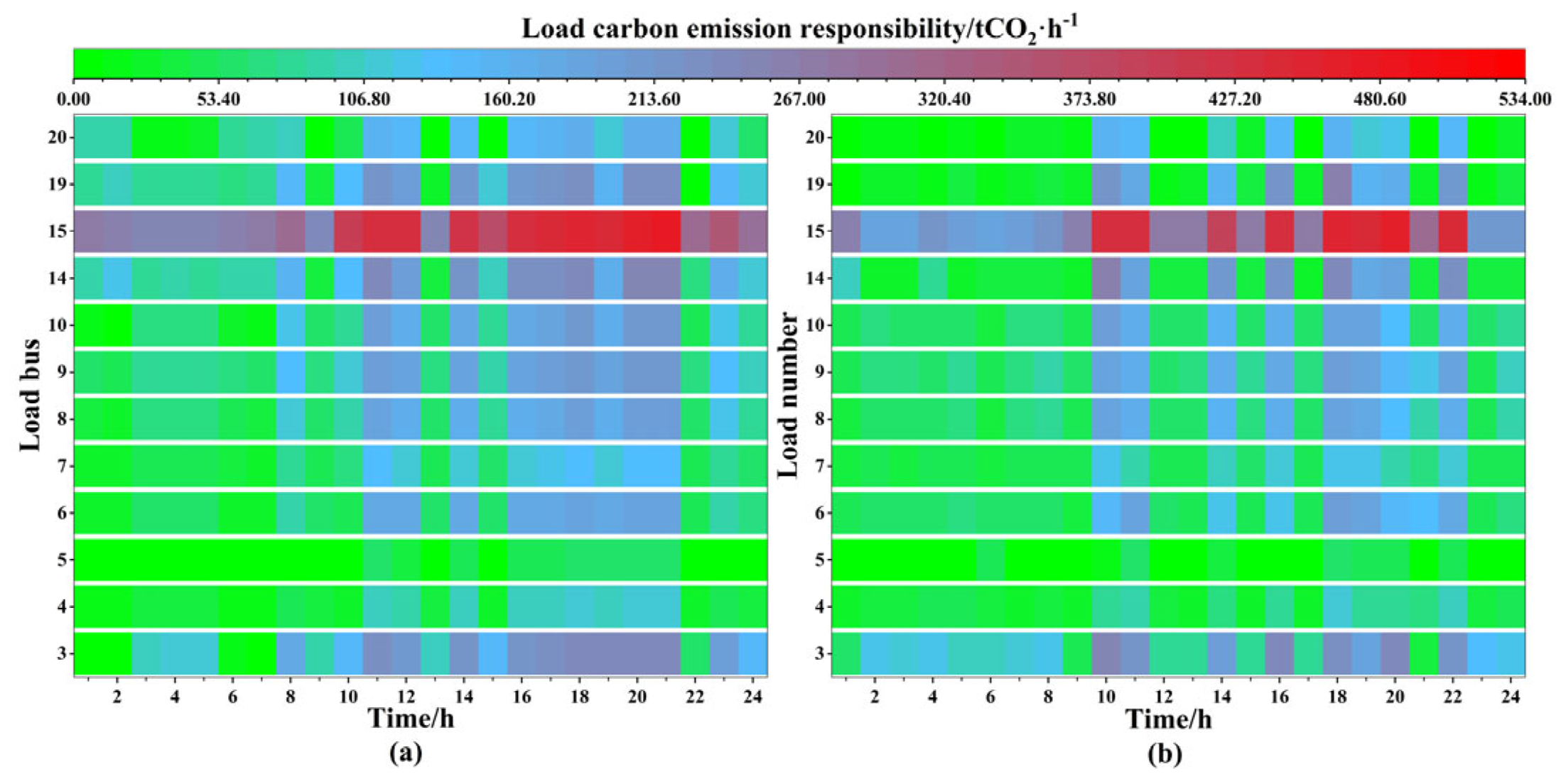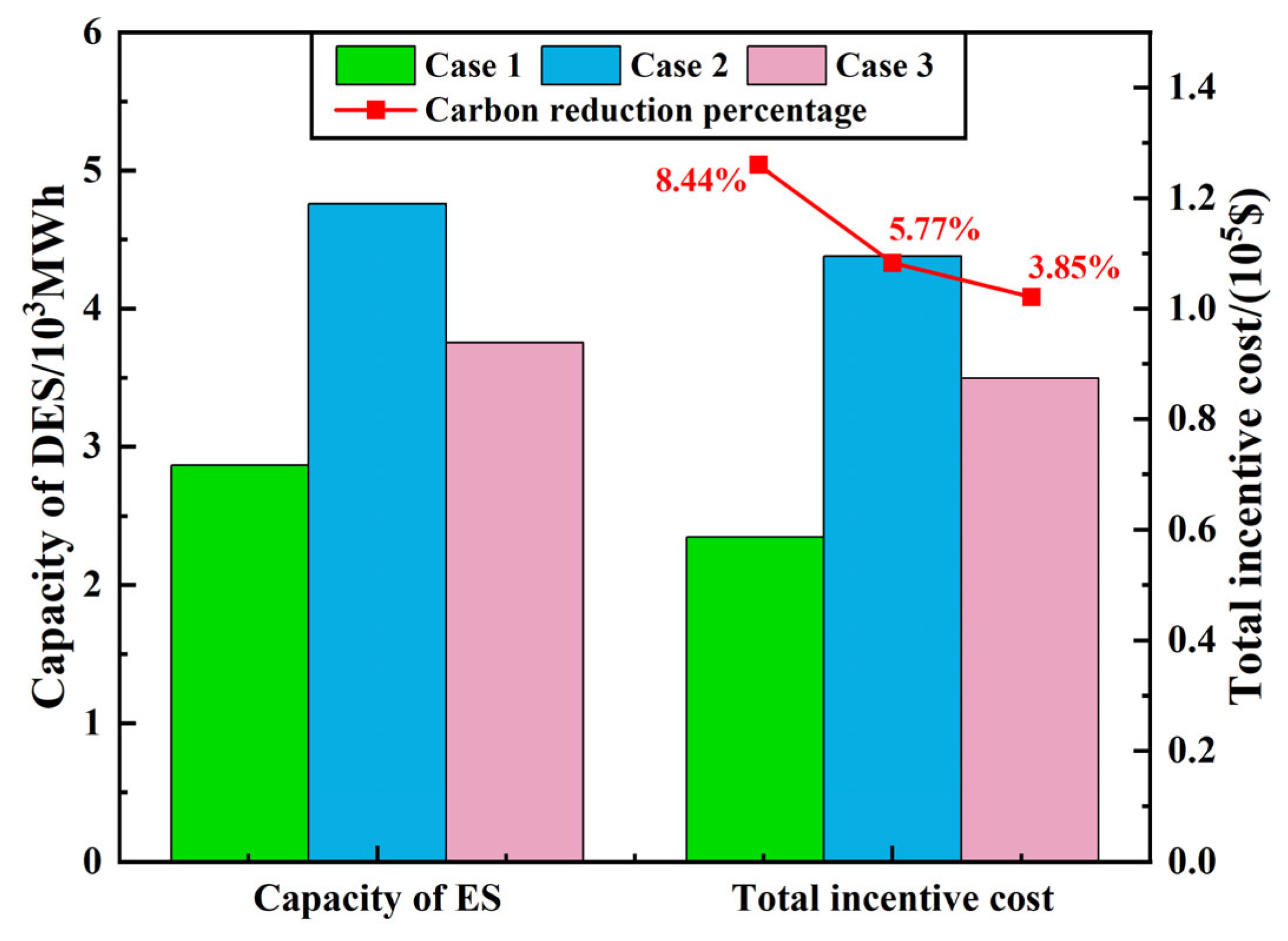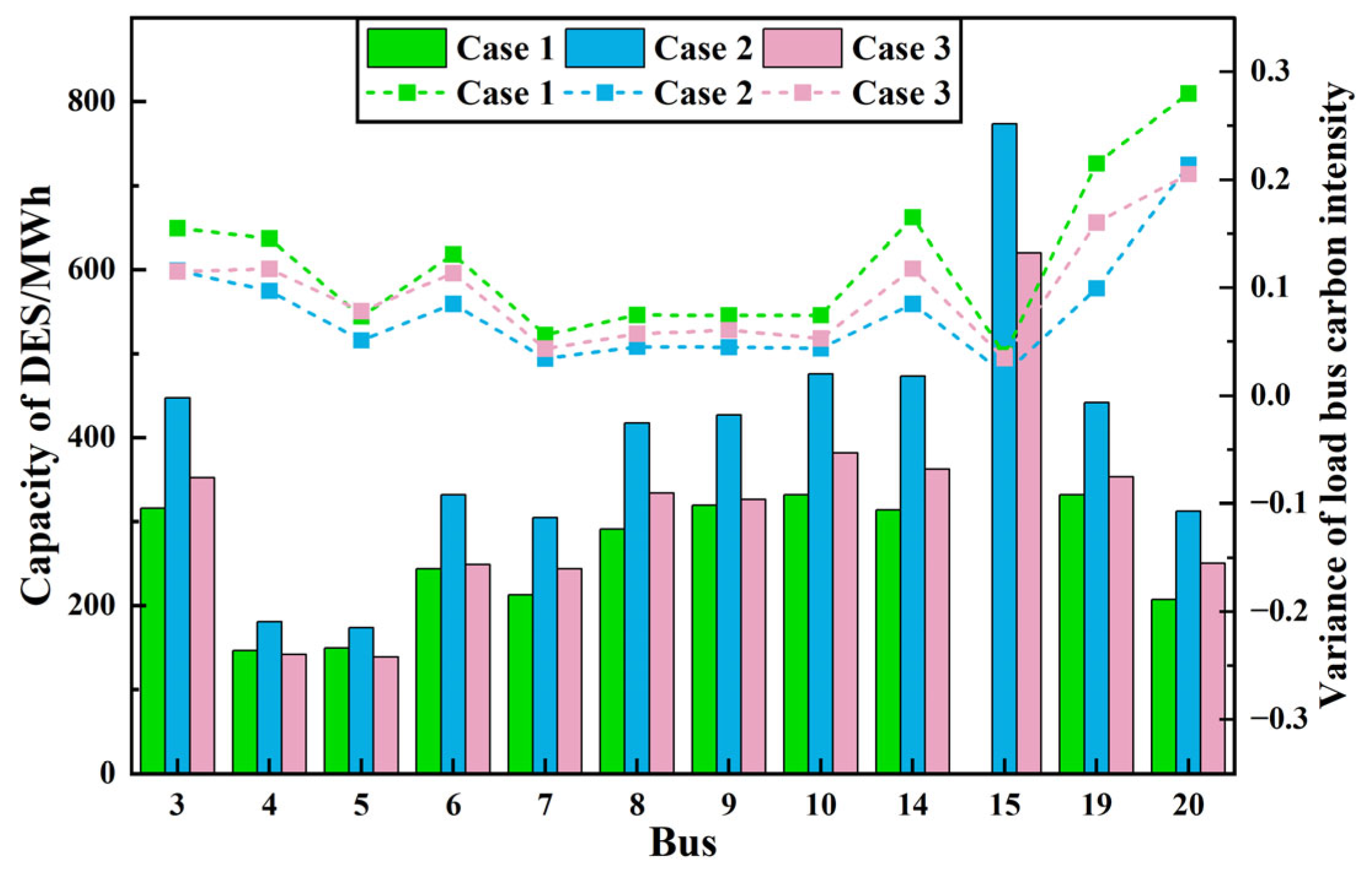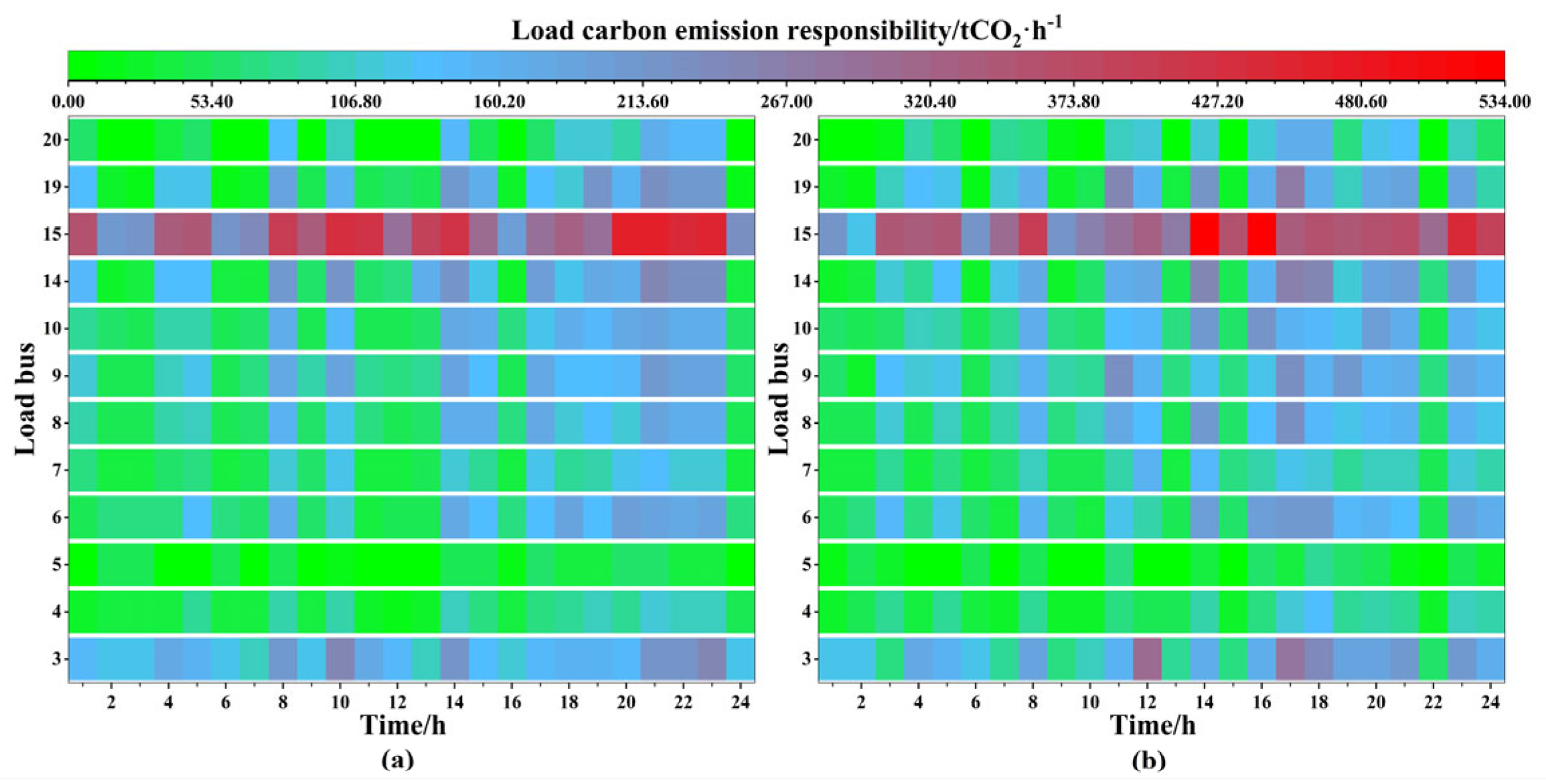1. Introduction
Under the pressure of the Paris Agreement, countries around the world have proposed carbon peaking and carbon-neutral targets to further implement their carbon emission reduction goals [
1,
2,
3]. For the energy sector, the essence of carbon reduction is to reduce the use of fossil energy and replace it with low-carbon renewable energy [
4,
5,
6]. However, renewable energy sources, e.g., wind power and photovoltaic, are directly dependent on natural energy sources, so the power generated has large intermittency [
7,
8,
9]. Intermittent power exhibits high uncertainty and is difficult to accommodate in the system, resulting in the common phenomenon of wind and solar energy curtailment [
10,
11,
12]. Energy storage is a good partner for renewable energy in practical applications because it can be flexibly charged and discharged like an energy sponge, showing better flexibility [
5,
13]. Therefore, energy storage planning for systems containing renewable energy has become an international study hotspot in the field.
With the widespread adoption of renewable energy and the development of energy storage technologies, energy storage planning in source-side centralized renewable energy plants has been well studied. Hou et al. [
14] proposed a gravity energy storage system tailored for mountainous regions and developed an optimal capacity planning model for an on-grid wind-photovoltaic-storage hybrid power system. Palys et al. [
15] employed an optimal combined capacity planning and scheduling model to investigate the economic feasibility of using hydrogen and ammonia for islanded renewable energy storage. Zhang et al. [
16] introduced an innovative co-planning model encompassing wind farms, energy storage, and transmission network, accounting for imbalanced power, unit ramp capacity, and renewable energy incentives. Chen et al. [
17] focused on the grid-connection transmission line and locally deployed energy storage unit capacities in conjunction with solar plants, exploring the feasible set of capacities. Furthermore, solar thermal storage has gained increasing attention in recent years. Al-Ghussain et al. [
18] demonstrated the practicality of integrating thermal storage into renewable power generation systems, highlighting its ability to fulfill 100% of energy requirements and alleviate the demand for more hazardous alternatives. Wang et al. [
19] proposed a two-stage decision-making framework for wind and concentrating solar power energy systems, investigating thermal energy storage capacity planning and energy dispatch.
Simultaneously, demand response is gaining more and more attention in the context of increasing uncertainties in the power system. Demand-side energy storage (DES) is the fundamental guarantee to enhance demand response capability and improve load elasticity. Promoting demand-side energy storage planning is both a realistic development need and a way to ease the pressure on electric power companies to invest in energy storage. Chen et al. [
20] developed an integrated model for power generation and customer-sited energy storage system expansion planning, examining the impact of customer-sited energy storage systems on the integration of renewable energy. Wang et al. [
21] formulated a storage capacity expansion planning model incorporating multiple functions of hybrid energy storage within regional integrated energy systems. They further proposed an operational strategy for hybrid energy storage to actively participate in demand response activities. Shen et al. [
22] focused on multi-energy coupling demand response and presented an optimization method for energy storage in microgrids. User-side scenarios are more diverse and relatively blank in research, so demand-side energy storage planning research will be a promising research direction.
The development of demand-side energy storage cannot be achieved without the participation and investment of users or agents. However, current storage costs and electricity market policies do not provide sufficient incentives for deploying a demand-side energy storage [
20]. Incentive mechanisms for user-side energy storage are thus indispensable. Huang et al. [
23] evaluated two financial incentive mechanisms to promote energy storage investment. These mechanisms involved providing tax credits based on the installed storage capacity or the amount of energy delivered from the storage. Tian et al. [
24] investigated the impact of fiscal incentives, specifically production tax credits and investment tax credits, on investment behavior in the energy storage sector. Wang et al. [
25] proposed a multi-level incentive electricity prices mechanism for demand response and energy storage systems to address the operational risks of the virtual power plant participating in the short-term electricity market. Wang et al. [
26] designed an incentive mechanism for agents strategically investing in solar and battery storage systems to provide incentives to each user involved in the energy-sharing scheme.
However, most existing research has studied incentive mechanisms from an energy or power perspective. Few studies have proposed incentives directly from the perspective of carbon. Therefore, in the context of the decarbonization of energy systems, designing energy storage incentive mechanisms from a carbon perspective is in line with the development trend and has important research significance. Due to the demand-side energy storage capacity planning, it is necessary to clarify the demand-side carbon emission responsibility. Zhou et al. [
27] pioneered the carbon emission flow (CEF) theory, which established a strong theoretical basis for designing demand-side energy storage incentive mechanisms from a carbon perspective. Kang et al. [
28] proposed an improved CEF theory considering line power losses. The CEF theory can well track the flow of virtual carbon emission in the power system and thus gained popular applications. Wang et al. [
29], Wang et al. [
30], Wei et al. [
31], and Cheng et al. [
32] applied CEF theory to the research problem of planning and operation of power or multi-energy coupled systems. Therefore, based on the CEF theory, it is feasible to construct an incentive mechanism for energy storage planning that considers demand-side carbon emission responsibility.
In short, international scholars have made important contributions to demand-side energy storage planning and incentive mechanisms. Still, the design of demand-side energy storage incentive mechanisms from a carbon perspective has not been sufficiently studied. To fill the research gap, this article has conducted some studies with the following main contributions.
- (1)
Based on the CEF theory, a dynamic carbon incentive mechanism (DCIM) for demand-side energy storage is proposed. The proposed DCIM can effectively guide the demand-side energy storage carbon-oriented configuration and operation based on dynamic carbon intensities and prices.
- (2)
A hierarchical two-stage robust planning model for demand-side energy storage integrating the proposed DCIM is developed in this paper. The first level is obtaining the bus caron intensities through the economic dispatch and CEF model. The second level is a two-stage robust energy storage planning model considering the uncertainties of wind turbine output and power demand.
- (3)
Based on the nested column and constraint generation (N-C&CG) algorithm, the model is transformed into a mixed integer linear programming (MILP) problem, and a commercial optimization solver is invoked to solve it. The validity and advantages of the proposed model are then illustrated by numerical analysis of cases.
5. Conclusions
In this article, A DCIM is proposed based on the CEF theory. Besides, a hierarchical two-stage robust DES planning model incorporating the proposed DCIM is developed. The effectiveness and advantages of the proposed model are evaluated with the MATLAB/YALMIP platform on IEEE 24-bus power systems. From the case studies and discussion, we can draw the following points.
- (1)
The proposed model can effectively promote carbon-oriented demand-side energy storage planning and reduce system carbon emissions by 8.44%.
- (2)
The proposed DCIM can efficaciously lead the DES configuration and operation in a direction conducive to system carbon reduction.
- (3)
By comparing with the other two existing incentive mechanisms, the proposed DCIM is more capable of promoting the system to reduce carbon emissions with less subsidy cost and energy storage investment cost.
This study mainly focuses on DES planning. Other load-side flexible resources, such as load shedding, electric vehicles, etc., were not considered in this study. Demand-side carbon policies to guide the orderly charging of electric vehicles can be further investigated in future research.
